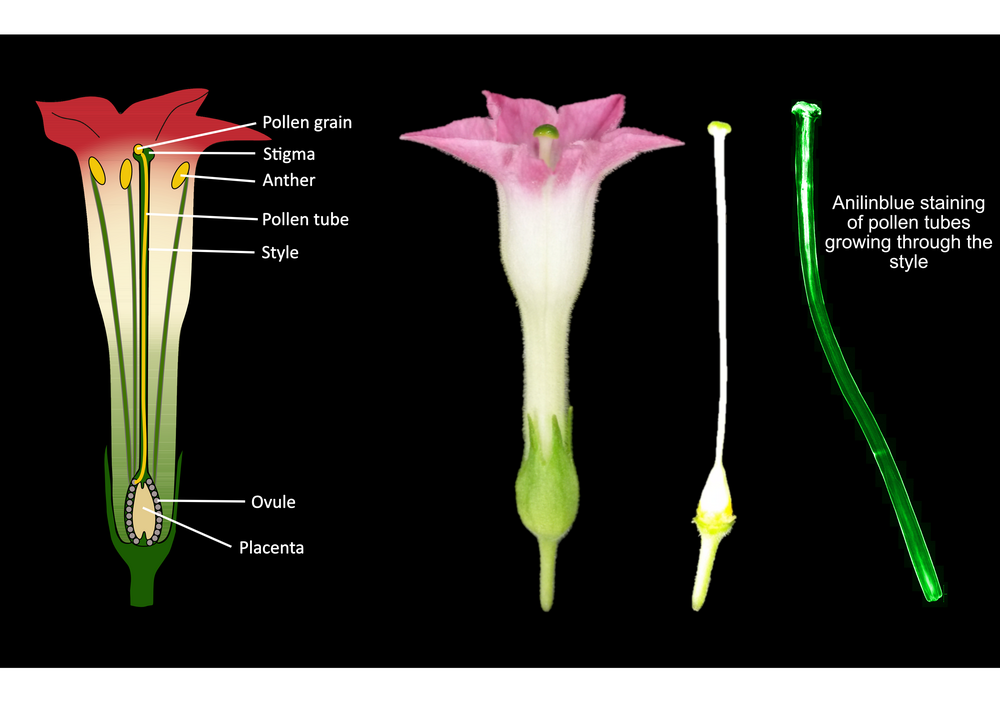Regulation of ion channels by Defensin-like proteins
Regulation of ion channels by Defensin-like proteins
Sperm cells of higher plants are immobile and have to be transported to the female gametophyte by pollentubes for successful fertilization. Small, cysteine-rich proteins - so-called defensins - play an important role in the "attracting" the pollen tube tot he ovule. In cooperation with Thomas Dresselhaus (University of Regensburg) we have shown that the maize potassium channel KZM1 is a target structure of the defensin-like (DEFL) protein ZmES4 (Zea mays embryo sac 4).
In the current project we want to elucidate the molecular mechanism of this interaction through structural/functional analyzes. Given the specificity of this interaction we want to identify the domains and amino acid residues in the KZM1 channel, essential for ZmES4 binding. Since the reproduction of angiosperms requires a high eficient cell-cell communication, we are investigating whether the interaction between a DEFL protein and an ion channel is a general principle in higher plants for pollen tube opening and discharging the sperm cells. Using tobacco (Nicotiana tabacum) as an experimental system, we want to identify the signals that play over a large distance (in the pen) and over a short distance (in the sperm) and find out how the communication between egg cell and pollen tube works . In this project, we are especially interested in calcium signals within growing pollen tubes when facing the DEFL peptides responsible for guiding the pollen tube towards the female gametophyte. Molecular biology methods such as RNA, DNA isolation, RNA-Seq and (q)PCR are used as well as electrophysiological methods such as MIFE (Microfluid Ion Flux Estimation) and calcium imaging of pollen tubes using different fluorescence-based reporter constructs .









